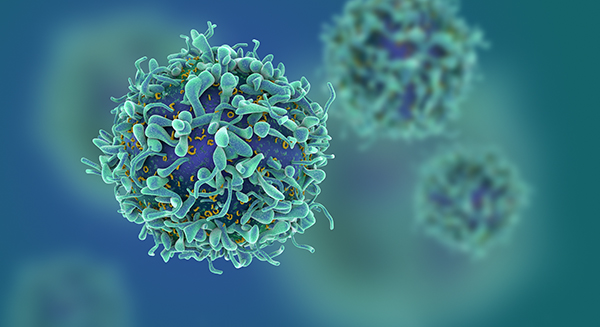The FDA and International Organization for Standardization (ISO) requires manufacturers to develop and provide instructions for use (IFU) that explain “instructions for a reprocessing method that reflects the physical design of the device, its intended use, and the soiling and contamination to which the device will be subject during clinical use.”1
The biggest challenge for most manufacturers is determining what contaminants the device will be subject to during clinical use. There is an element of unpredictability in clinical use, which is why companies should develop IFU cleaning instructions with the worst-case clinical use and contamination method in mind.
By developing the IFU’s cleaning instructions to have a successful validation test that utilizes the worst case scenario, manufacturers can ensure that the process is robust and documentation is aligned with requirements, setting their device up to avoid delays in timelines that can lead to lost revenue opportunities.
A Clear Understanding of Worst-Case
The validation experimental design should demonstrate that the cleaning methods (either manual or mechanical) use a worst-case approach for the numerous study variables that comprise the validation construct.
As indicated by the FDA guidance document, the worst-case approach should account for the least rigorous application of the cleaning method for the device. The worst-case should demonstrate the “most challenging to reprocess and most contaminated, and at least two quantitative test methods that are related to the clinically relevant soil.”1
Choosing the Master Device
Determining the worst-case scenario for every device in a product line can be a time-consuming and costly endeavor. Instead, select a master device for the family and write the IFU for the worst-case scenario specific to that device, which translates to the other devices in the product line.
When choosing the master device, it is critical to have a well-defined product family to ensure that the IFU is effective for all included devices. Define a range that the master product will represent and be prepared to justify why the master product represents all the family’s challenges. You can group families based on materials, indications for use, device design, and cleaning process (to name a few). AAMI TIR 12, TIR 30, and FDA guidance can provide further explanation and examples for this.2
One or more products are then chosen from the family to be the master product. The device’s complexity is typically the most significant factor in determining which product will represent the worst-case. If the device design is intricate, make sure this is reflected when writing the IFU cleaning instructions and plan adequate lead time to evaluate it. Consider the size and challenges of all the features as well as the material type as certain materials may be harder to clean.
Devices with intricate designs warrant a more comprehensive set of instructions for cleaning and, in turn, have more worst-case scenarios to test. Once the testing lab has validated the selected master device under the worst-case scenario, others in its family that are deemed less challenging can adopt those validated parameters.
When writing the IFU, focus on cleaning needs for the master product in the device family. A common pitfall with instructions is a lack of robustness and clarity. Prioritize the end user’s perspective when drafting, rather than what makes the IFU easier to understand for manufacturers or regulatory officials.
End users likely aren’t going to be engineers, so they may not be familiar with technical terminology, have an equal background or possess inherent assumptions compared to the development team. Clear, step-by-step directions, images and identification of specific cleaning materials needed are essential, especially if cleaning requires disassembling and reassembling the device. Clarity helps reduce variability.

Determining Test Soils
Understanding the clinical soil the device will likely come in contact with will help manufacturers determine the proper cleaning methods. Before validation testing begins, define what clean means regarding the device by selecting the testing analyte(s) that is the most clinically relevant. Possible relevant analytes include protein, hemoglobin and Total Organic Carbon (TOC), among others. FDA requires testing at least two.1
For example, if blood and mucus are present together, testing cleaning validations for each of them will not represent the worst-case scenario. Validation must combine the two as the mixture could be more challenging to clean. Additionally, since validation testing accounts for simulated use, studies should vet the full cycle used to evaluate whether soil builds over multiple cleanings.
If the IFU presents a range in time, temperature, dilution, etc., validation testing should always use the least rigorous value to represent worst-case. Take this into consideration while writing the cleaning process in the IFU. When providing a range, know that it will have to hold up to the lowest denominator.
Feasibility Testing
The FDA states that “Where applicable, clinicians should be consulted to determine the extent and nature of real-world, worst-case device contamination. Also, practicality and human factors issues should be considered when establishing your reprocessing protocols.”1
Consult experts, including testing partners, throughout the cleaning instruction development process. One way to do this is to use feasibility testing throughout drafting to stay ahead of risks. Feasibility testing allows manufacturers to determine if the instructions are robust enough or too complicated without delaying the overall timeline. It can even run on a parallel path rather than a critical path in device development.
Sustainable Savings
It is critical to consider validations as part of the design and development process. Manufacturers have to hit individual internal timelines to be able to hit FDA timelines for approval. By writing the IFU with the worst-case scenario in mind, the validation process is smoother, and therefore, the product gets to market on time and preventing lost revenue. Not to mention, with increased patient safety and less chance of customer complaints or field actions.
References
- FDA. (March 2015). “Reprocessing Medical Devices in Health Care Settings: Validation Methods and Labeling, Guidance for Industry and Food and Drug Administration Staff.” Guidance document.
- AAMI. (August 10, 2011). “A Compendium of Processes, Materials, Test Methods, and Acceptance Criteria for Cleaning Reusable Medical Devices, Association of the Advancement of Medical Instrumentation”.








